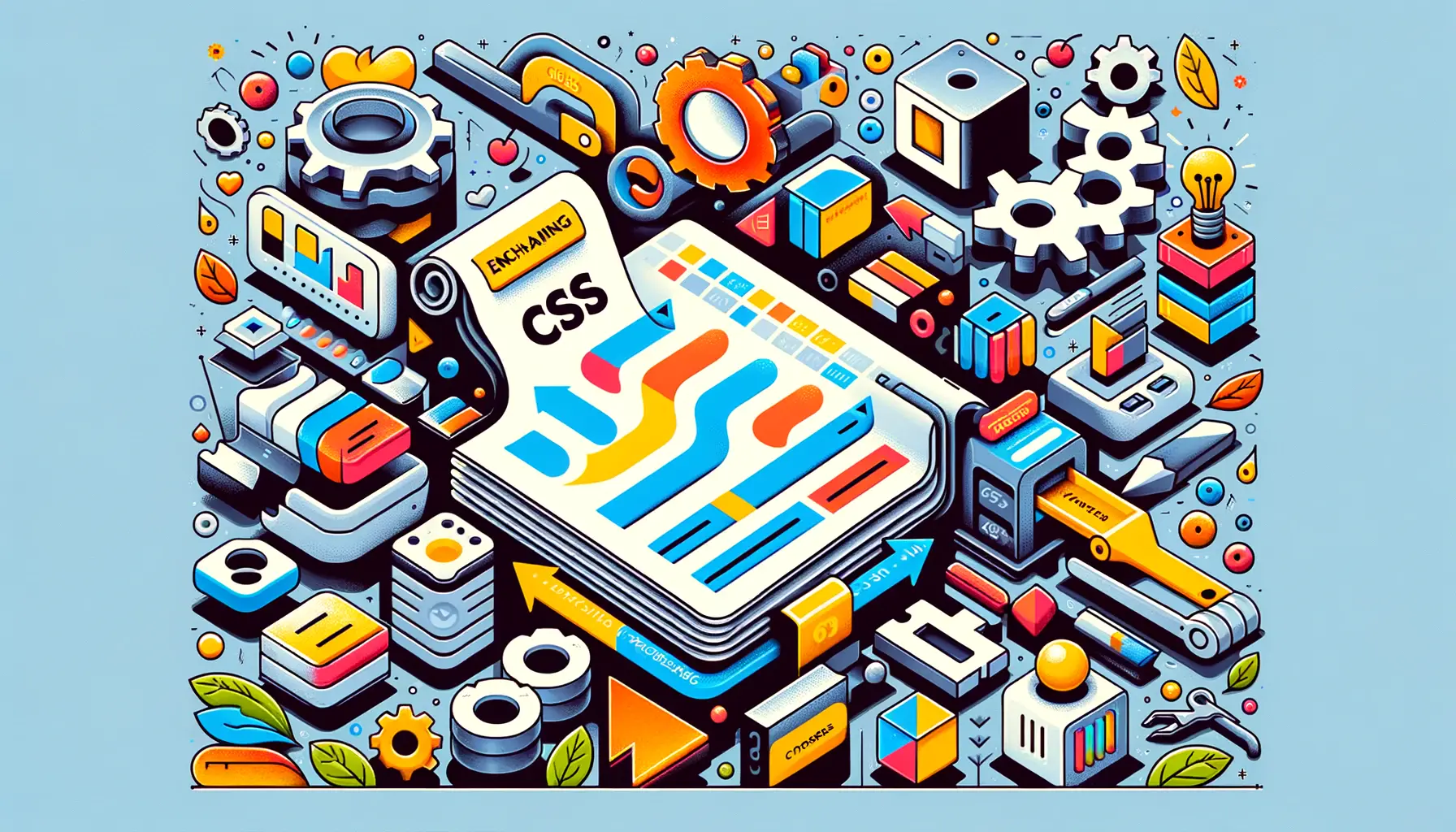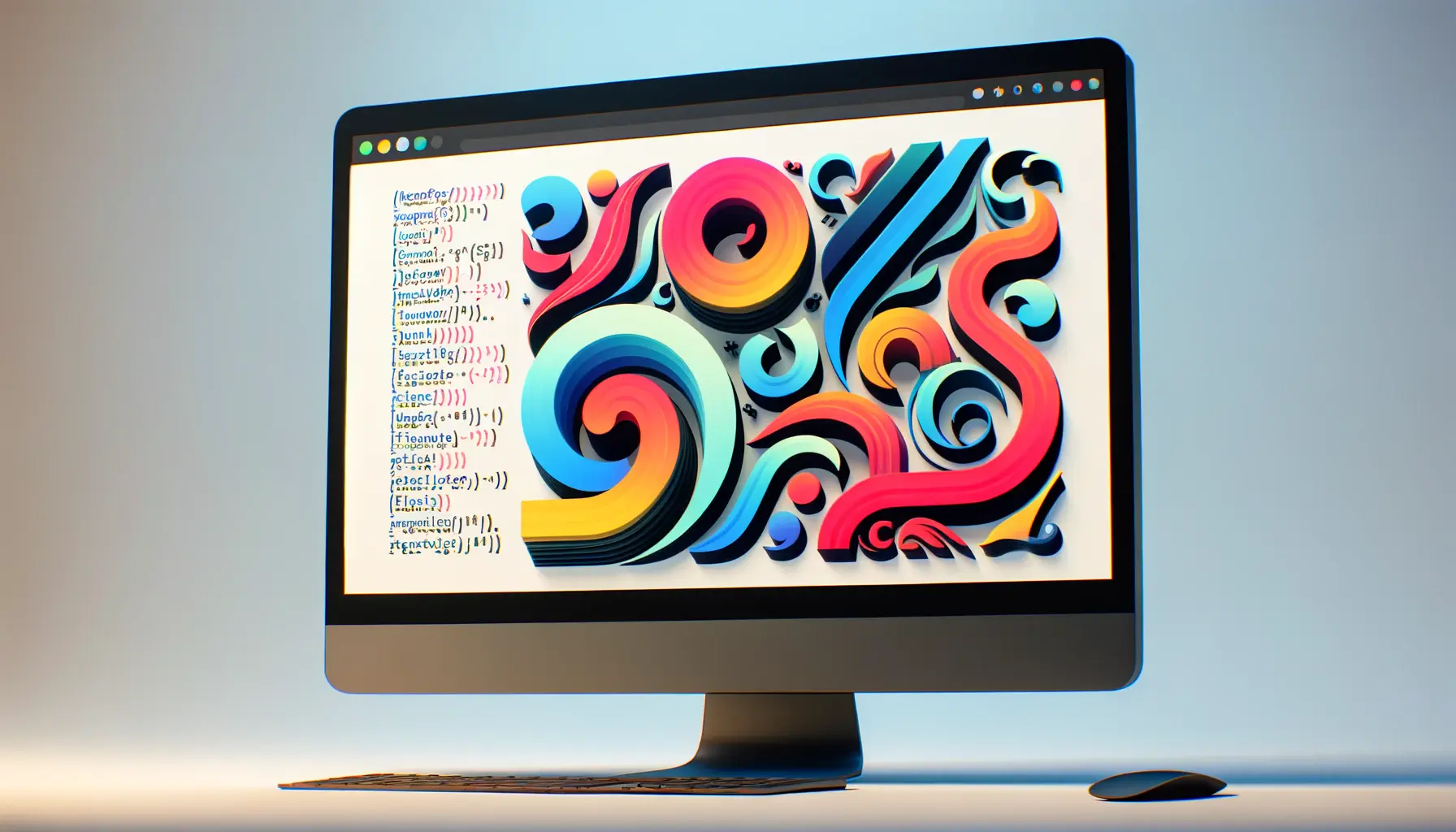The evolution of web design has been a journey of discovery, innovation, and adaptation.
At the heart of this evolution lies Cascading Style Sheets (CSS), the language that styles the web.
As we delve into the future of web design, CSS Variables emerge as a pivotal innovation, poised to redefine the efficiency, flexibility, and creativity of web development.
CSS Variables, also known as custom properties, introduce a method of storing values that can be reused throughout a document, marking a significant shift towards more dynamic and adaptable design strategies.
The introduction of CSS Variables is not just a technical update; it’s a paradigm shift in how designers approach web styling.
By enabling values to be set and updated in one place and reflected across the entire stylesheet, CSS Variables offer a level of dynamism and control previously unattainable with CSS alone.
This feature simplifies theme changes, facilitates real-time updates, and opens the door to innovative design possibilities, making it a cornerstone for the future of web design.
- Understanding CSS Variables
- Implementing CSS Variables in Web Design
- Challenges and Solutions with CSS Variables
- Advanced Techniques and Creative Uses of CSS Variables
- Optimizing Performance with CSS Variables
- Future Trends and Evolution of CSS Variables
- Integrating CSS Variables with JavaScript
- Embracing the Future with CSS Variables
- CSS Variables FAQ
Understanding CSS Variables
What Are CSS Variables?
CSS Variables allow developers to store specific values for reuse throughout a stylesheet.
This capability transforms the way styles are applied, making designs more consistent and maintainable.
By defining a variable once and referencing it across the document, changes can be made globally, enhancing efficiency and flexibility.
This approach not only streamlines the development process but also opens up new avenues for creativity and experimentation in design.
The use of CSS Variables extends beyond mere convenience.
It represents a shift towards a more systematic and logical approach to web design, where the focus is on scalability and adaptability.
The ability to quickly adjust a site’s color scheme, padding, or font sizes by modifying a single value has profound implications for responsive design, theme customization, and even user-generated styling preferences.
Benefits of CSS Variables
- Enhanced Maintainability: CSS Variables reduce the need for repetitive code, making stylesheets easier to understand and maintain.
- Improved Scalability: By centralizing the definition of common values, CSS Variables make it easier to scale designs and adapt them to various devices and screen sizes.
- Dynamic Theming: CSS Variables facilitate the implementation of dynamic themes, allowing for real-time changes based on user interactions or preferences.
CSS Variables are a game-changer for web design, offering unprecedented flexibility and control over the styling of web pages.
Implementing CSS Variables in Web Design
The practical application of CSS Variables in web design marks a significant leap towards more dynamic, efficient, and personalized websites.
Implementing CSS Variables involves understanding their scope, syntax, and how they can be manipulated to create responsive and interactive designs.
This section explores the foundational steps to effectively utilize CSS Variables, ensuring web projects are not only visually appealing but also highly adaptable and maintainable.
At the core of CSS Variables implementation is the concept of defining and applying these variables across different parts of a stylesheet.
This process begins with the declaration of variables within a global scope, typically using the :root pseudo-class, which makes them accessible throughout the entire stylesheet.
Variables are then invoked using the var() function, allowing their values to be applied to CSS properties.
Defining and Using CSS Variables
- Declaration: Variables are declared by prefixing the property name with two dashes (–) and assigning a value. For example,
--main-color: #333;sets a main color for the site. - Application: To use a variable, the
var()function is employed, such ascolor: var(--main-color);, applying the main color to text.
Dynamic Theme Customization
One of the most compelling uses of CSS Variables is for dynamic theme customization.
By leveraging JavaScript alongside CSS Variables, developers can create interfaces that adapt to user preferences in real-time.
This could range from switching between light and dark modes to adjusting layouts based on user interactions.
For instance, a button click can trigger a JavaScript function that changes the value of a CSS Variable, instantly updating the site’s theme.
This interaction not only enhances the user experience but also showcases the versatility of CSS Variables in creating responsive, user-centric designs.
Incorporating CSS Variables opens a realm of possibilities for interactive and responsive web design, making it easier to tailor experiences to individual user preferences.
Challenges and Solutions with CSS Variables
While CSS Variables significantly enhance the flexibility and maintainability of web designs, their implementation is not without challenges.
These challenges range from browser compatibility issues to complexities in managing large-scale variable systems.
However, with every challenge comes a solution, and understanding these can help developers leverage CSS Variables more effectively.
One of the primary hurdles in adopting CSS Variables has been ensuring consistent behavior across all browsers.
Although modern browsers widely support CSS Variables, discrepancies can still occur, especially in older versions.
Additionally, managing a large number of variables in a complex project can become cumbersome, potentially leading to confusion and maintenance difficulties.
Browser Compatibility
- Issue: Older browsers, notably Internet Explorer, do not support CSS Variables, leading to styling inconsistencies.
- Solution: Use feature detection and provide fallbacks for crucial styles. Tools like PostCSS can automate the process, ensuring styles degrade gracefully in unsupported browsers.
Managing Variables
- Issue: Large projects can result in a sprawling system of variables, making it hard to keep track of and update values efficiently.
- Solution: Adopt a systematic naming convention and organize variables logically, such as by theme components or functionality. Utilizing CSS preprocessors alongside CSS Variables can also streamline management.
Effective management and strategic fallback planning are essential for overcoming the challenges associated with CSS Variables, ensuring a seamless and consistent user experience across all browsers.
Advanced Techniques and Creative Uses of CSS Variables
The advent of CSS Variables has not only simplified the styling process but also opened up a plethora of creative possibilities for web design.
Beyond basic color schemes and font sizes, CSS Variables can be harnessed for more advanced and innovative applications, pushing the boundaries of what can be achieved with CSS alone.
This exploration into the advanced techniques and creative uses of CSS Variables showcases their potential to transform web design.
One of the most exciting aspects of CSS Variables is their ability to interact with JavaScript, enabling dynamic changes to styles based on user actions or conditions.
This interaction paves the way for a new level of interactivity and personalization in web design, from theme customization to animation control.
Interactive Animations
By integrating CSS Variables with keyframe animations and transitions, developers can create interactive animations that respond to user inputs or changes in the environment.
For example, changing the value of a CSS Variable with JavaScript based on scroll position can alter animation properties, creating a parallax effect that enhances the depth and dynamism of a webpage.
This technique not only enriches the user experience but also highlights the versatility of CSS Variables in crafting engaging and responsive designs.
The ability to adjust animation parameters in real-time opens up endless possibilities for creative storytelling and brand expression on the web.
Theme Customization and User Preferences
Another innovative application of CSS Variables is in theme customization and adapting to user preferences.
Websites can offer theme options (like light mode and dark mode) that users can select, with CSS Variables dynamically adjusting the visual elements of the site according to the chosen theme.
This customization extends beyond colors to include typography, spacing, and layout adjustments, all of which can be controlled with CSS Variables.
This level of personalization not only enhances accessibility and user satisfaction but also demonstrates the power of CSS Variables in creating flexible and adaptable web environments.
By allowing users to tailor their browsing experience, websites can foster a deeper connection and engagement with their audience.
CSS Variables empower developers and designers to innovate beyond traditional styling, enabling dynamic interactions and personalized experiences that were once difficult or impossible to achieve.
Optimizing Performance with CSS Variables
While CSS Variables enhance design flexibility and creativity, their impact on website performance is a consideration that cannot be overlooked.
Efficient use of CSS Variables is crucial to maintaining fast load times and smooth interactions, especially for complex websites with extensive styling.
This section delves into strategies for optimizing performance while leveraging the power of CSS Variables.
Performance optimization with CSS Variables involves careful planning and strategic implementation.
By minimizing the number of variables and strategically placing them, developers can reduce the computational load on the browser, ensuring a seamless user experience.
Strategies for Efficient Use
- Limit Scope: Define variables at the smallest scope necessary to reduce the overall number of variables the browser needs to manage. Local scope can be more efficient than global scope for variables used in specific components.
- Minimize Dynamic Changes: While CSS Variables can be changed dynamically with JavaScript, frequent changes can lead to performance issues. Use dynamic updates sparingly and only when they significantly enhance the user experience.
Best Practices for Performance
- Use Preprocessors: Combining CSS Variables with preprocessors like Sass or Less can streamline the development process and reduce the complexity of stylesheets, indirectly benefiting performance.
- Optimize CSS Delivery: Ensure that CSS files are minified and loaded in a non-blocking manner. This reduces the initial load time and allows the browser to render content more quickly.
Effective performance optimization with CSS Variables ensures that the benefits of flexibility and dynamism do not come at the cost of user experience.
Future Trends and Evolution of CSS Variables
The landscape of web design and development is continually evolving, with CSS Variables at the forefront of this transformation.
As we look towards the future, it’s clear that CSS Variables will play a pivotal role in shaping the next generation of web design.
Their potential for enhancing design flexibility, improving maintainability, and enabling innovative styling solutions is just beginning to be tapped.
The ongoing development of CSS specifications and browser capabilities suggests that CSS Variables will become even more powerful and versatile.
This progression will likely introduce new functionalities and use cases, further cementing CSS Variables as a fundamental tool in the web developer’s toolkit.
Expanding Capabilities
- Integration with CSS Grid and Flexbox: Future enhancements may include deeper integration of CSS Variables with layout systems like CSS Grid and Flexbox, enabling more dynamic and responsive designs.
- Improved Animation Control: Advancements in CSS Variables could offer more granular control over animations and transitions, allowing for more complex and interactive visual effects.
Enhancing User Experience
- Personalization and Accessibility: As web accessibility becomes increasingly important, CSS Variables can be used to create more adaptable and user-friendly interfaces, catering to a wider range of preferences and needs.
- Theme Customization: The trend towards customizable web experiences will continue, with CSS Variables enabling users to tailor websites to their liking, from color schemes to layout configurations.
The future of CSS Variables is bright, with ongoing developments poised to unlock even greater possibilities for creativity, efficiency, and interactivity in web design.
Integrating CSS Variables with JavaScript
The synergy between CSS Variables and JavaScript opens up a dynamic world of web design possibilities, allowing for real-time updates to styles based on user interactions, data changes, or environmental conditions.
This integration is a cornerstone for interactive and responsive design, enabling developers to create more engaging and personalized user experiences.
JavaScript’s ability to read and manipulate CSS Variables provides a powerful tool for developers to dynamically alter the appearance and behavior of a website without reloading the page.
This interaction not only enhances the user experience but also offers a level of customization and flexibility previously difficult to achieve.
Dynamic Styling and Interactivity
- Real-Time Theme Changes: JavaScript can modify CSS Variables to implement theme changes on the fly, such as switching between light and dark modes based on user preference or time of day.
- Responsive Design Adjustments: Adjust layout or typography dynamically in response to viewport changes or device orientation, improving the site’s responsiveness and accessibility.
Enhancing User Engagement
- Interactive Elements: Use JavaScript to change CSS Variables in response to user actions, such as hover effects, clicks, or scroll positions, adding depth and interactivity to web elements.
- Personalization: Tailor the user experience by adjusting styles based on user data or preferences stored in cookies or local storage, making the web experience feel more personal and engaging.
The misconception that CSS and JavaScript are separate entities is dispelled by the collaborative power of CSS Variables and JavaScript, showcasing their combined potential to revolutionize web design.
Embracing the Future with CSS Variables
The journey through the intricacies and potential of CSS Variables underscores their transformative impact on web design.
As we’ve explored, CSS Variables are not merely a tool for simplifying stylesheet management but a foundation for innovation, allowing designers and developers to push the boundaries of what’s possible on the web.
The integration of CSS Variables with current technologies, their role in optimizing performance, and their contribution to the evolution of web design mark a significant milestone in the digital landscape.
The Path Forward
The future of web design, illuminated by the capabilities of CSS Variables, is one of endless possibilities.
The dynamic interplay between CSS Variables and JavaScript, the potential for real-time personalization, and the promise of more accessible and engaging web experiences highlight the pivotal role of CSS Variables in the next generation of web development.
As we look ahead, the continued evolution of CSS Variables promises to bring even more powerful tools to the hands of creative professionals, enabling them to craft experiences that are not only visually stunning but also deeply resonant with users.
Key Takeaways
- Dynamic Theming and Personalization: CSS Variables enable the creation of websites that can adapt in real-time to user preferences and environmental conditions, offering a level of personalization previously unattainable.
- Performance and Efficiency: The strategic use of CSS Variables contributes to more efficient code management, faster load times, and smoother interactions, enhancing the overall user experience.
- Innovation and Creativity: The flexibility afforded by CSS Variables opens up new avenues for creative expression, allowing designers to experiment with dynamic effects, animations, and responsive designs that respond to user interactions.
In conclusion, CSS Variables stand at the forefront of a revolution in web design, offering a glimpse into a future where websites are more adaptable, efficient, and engaging.
As we embrace CSS Variables, we unlock the potential to create web experiences that are not only more aligned with the needs and preferences of users but also more reflective of the creativity and innovation that drive the digital world forward.
The future of web design with CSS Variables is not just about making websites look better; it’s about creating a more interactive, personalized, and accessible web for everyone.
Quality web design is key for a great website! Check out our service page to partner with an expert web design agency.
CSS Variables FAQ
Explore common questions about CSS Variables to deepen your understanding and enhance your web design projects.
CSS Variables, also known as custom properties, allow you to store values for reuse throughout your CSS, making your stylesheets more dynamic and maintainable.
Define a CSS Variable by prefixing the property name with two dashes (–) and assigning a value, typically within the :root selector for global scope.
Yes, CSS Variables can be manipulated through JavaScript, enabling dynamic styling changes based on user interactions or conditions.
Most modern browsers support CSS Variables, but older versions, especially of Internet Explorer, do not. Use fallbacks for broader compatibility.
CSS Variables offer unprecedented flexibility, allowing for real-time theme changes, easier maintenance, and the creation of responsive designs.
Yes, CSS Variables can be scoped locally to specific elements or globally across the entire document, offering versatile styling options.
By reducing the need for repetitive code and enabling more efficient stylesheet management, CSS Variables can contribute to faster load times and smoother interactions.
The future of CSS Variables looks promising, with potential for deeper integration with web technologies, enhancing design flexibility and user experience.














